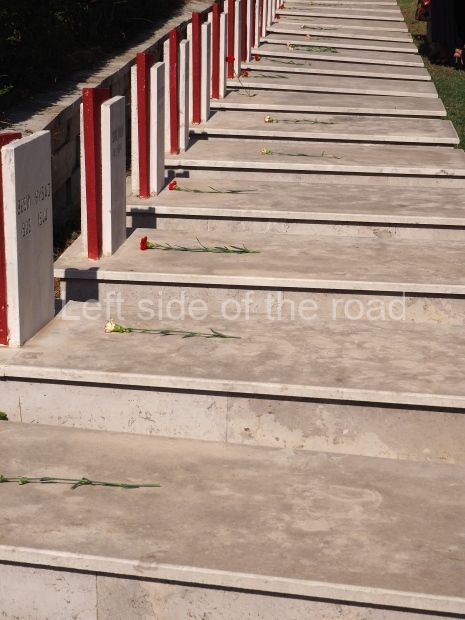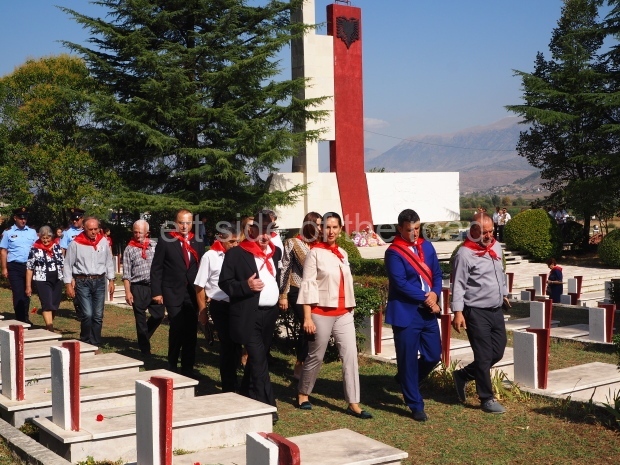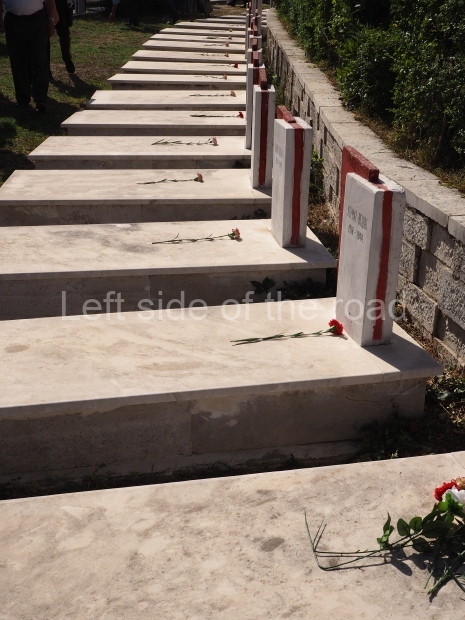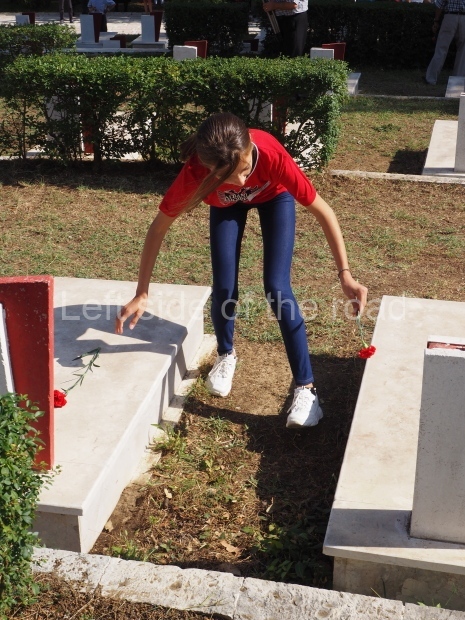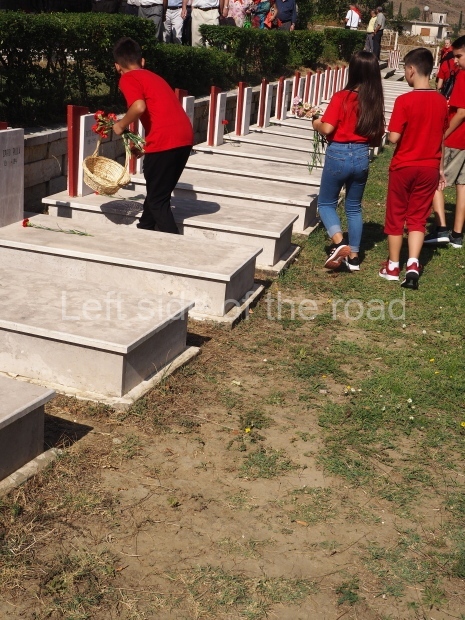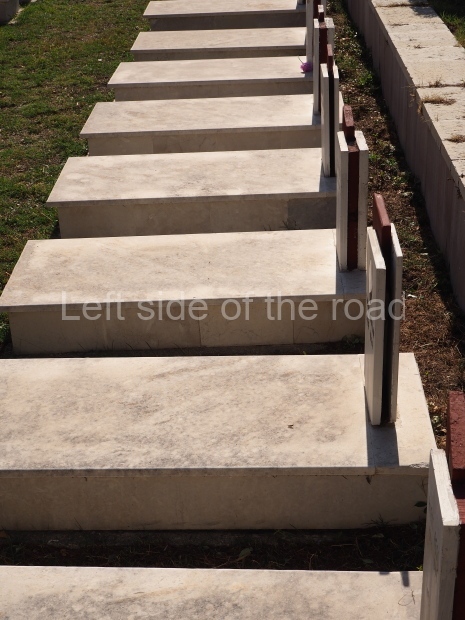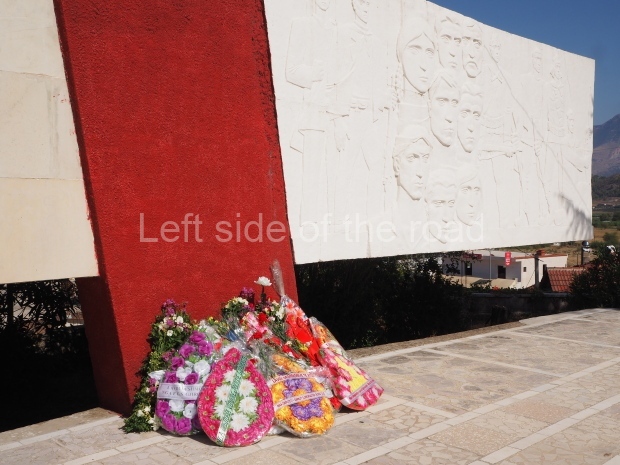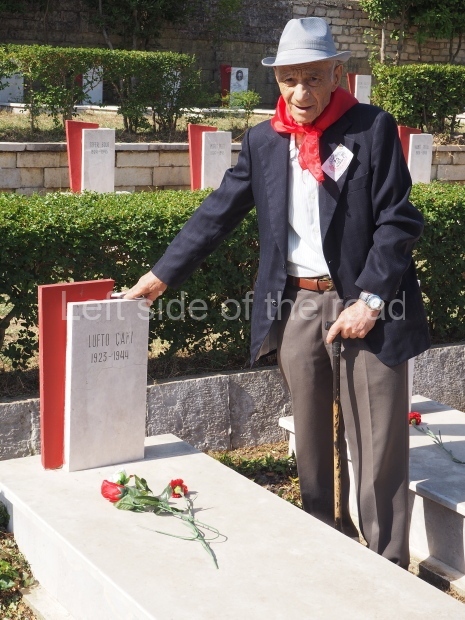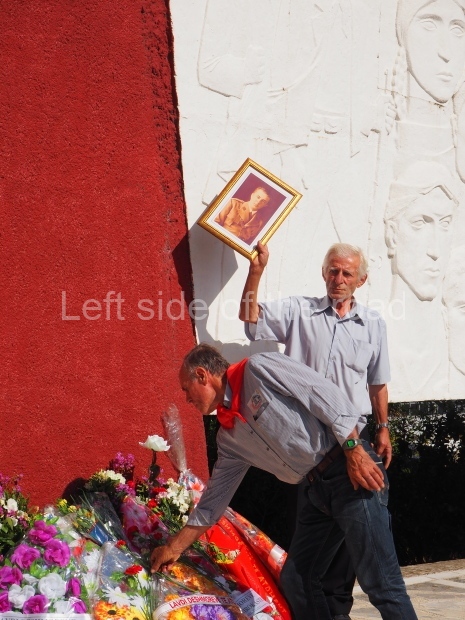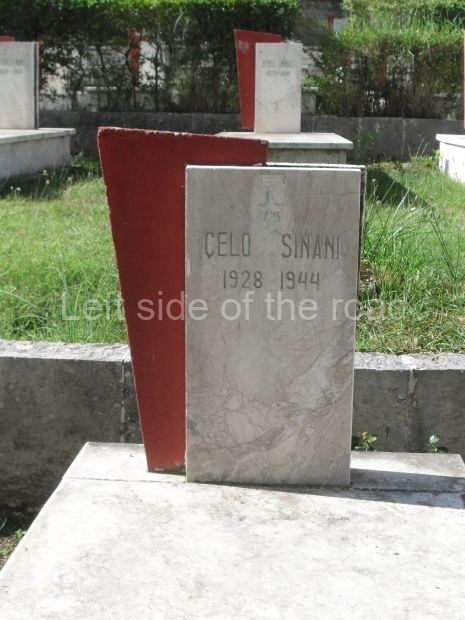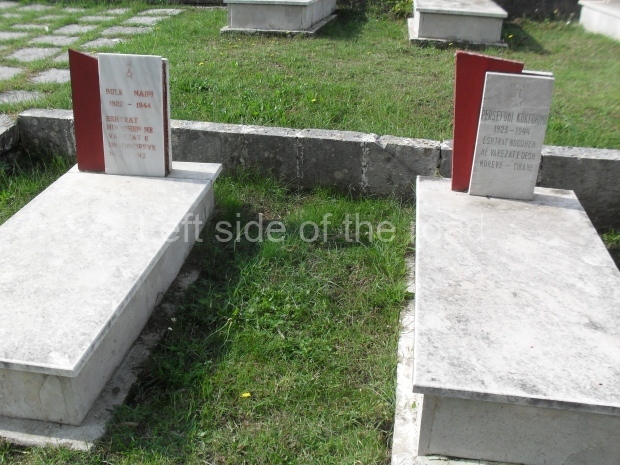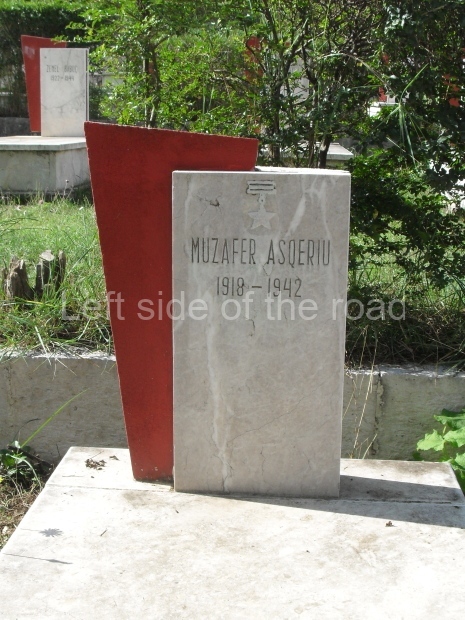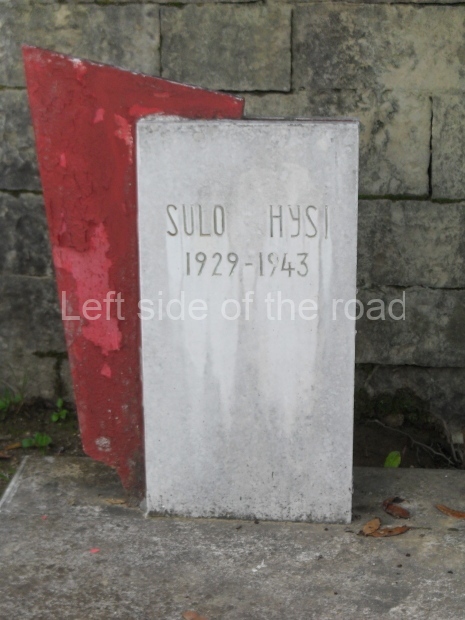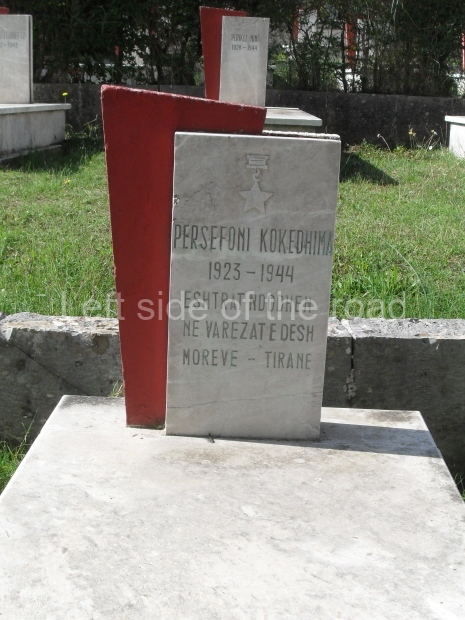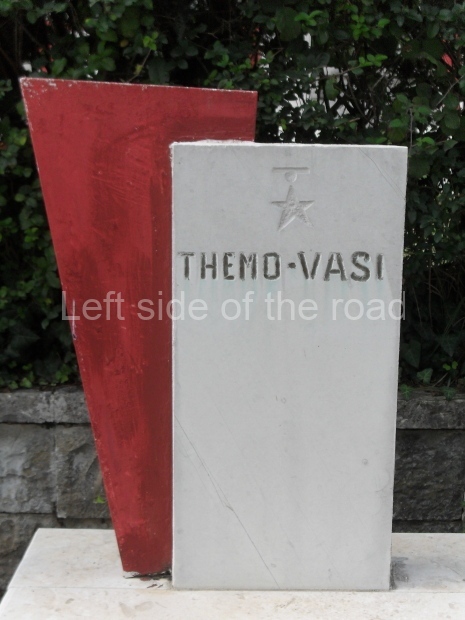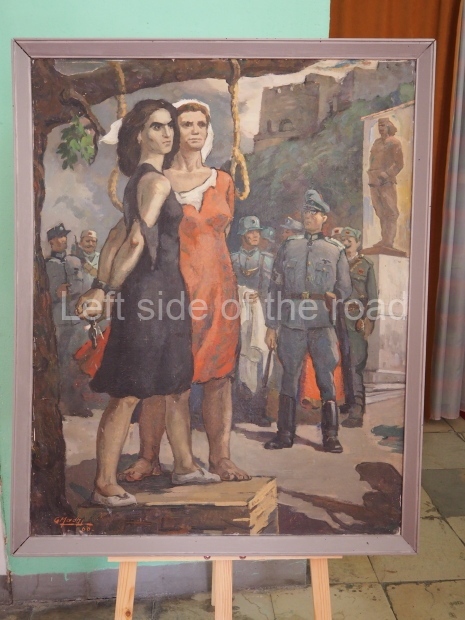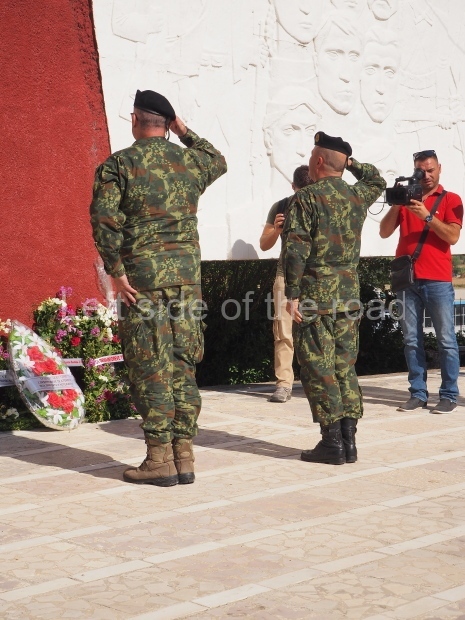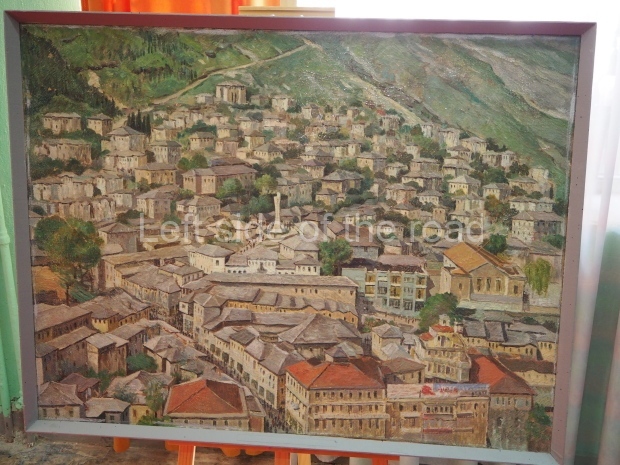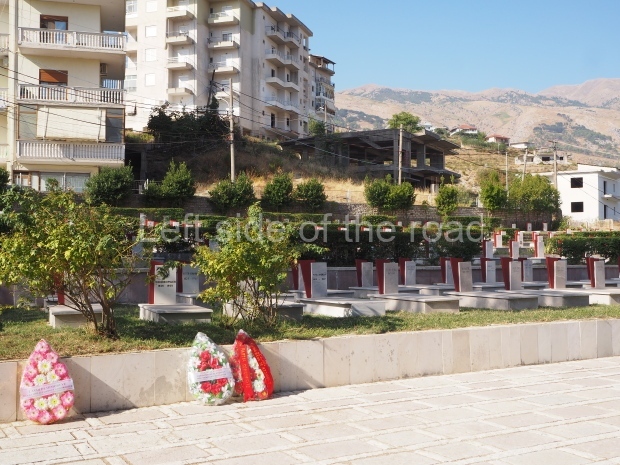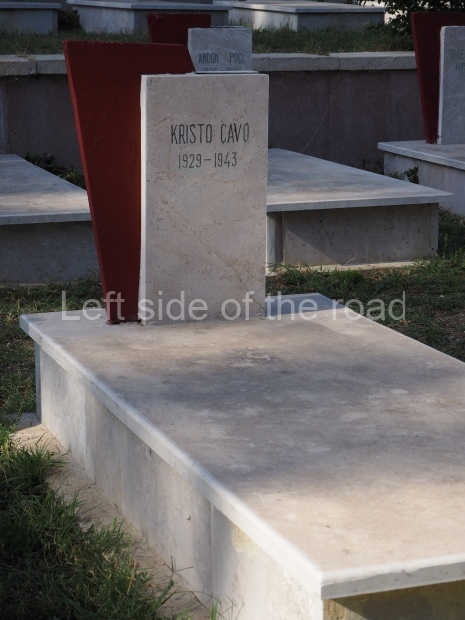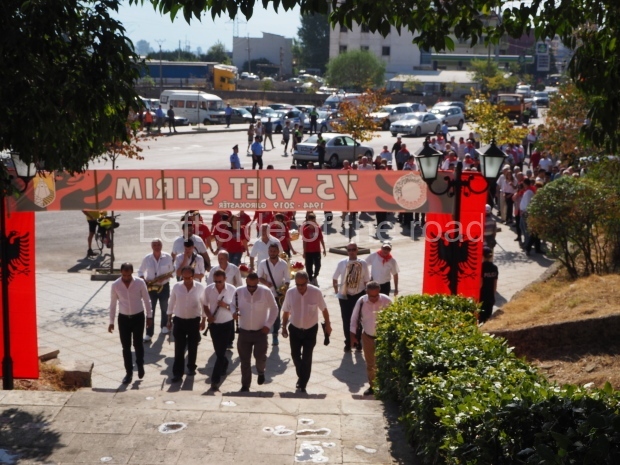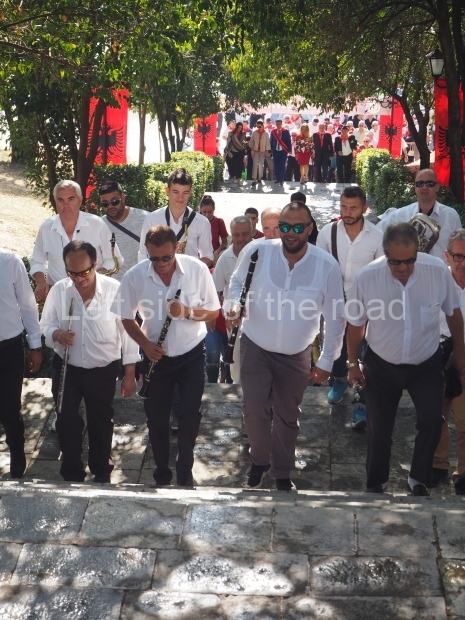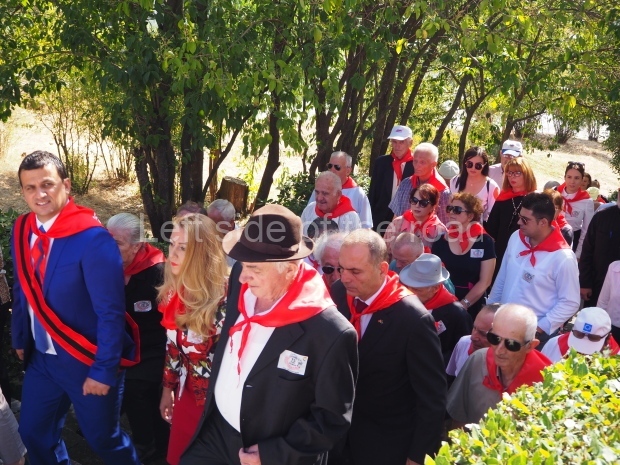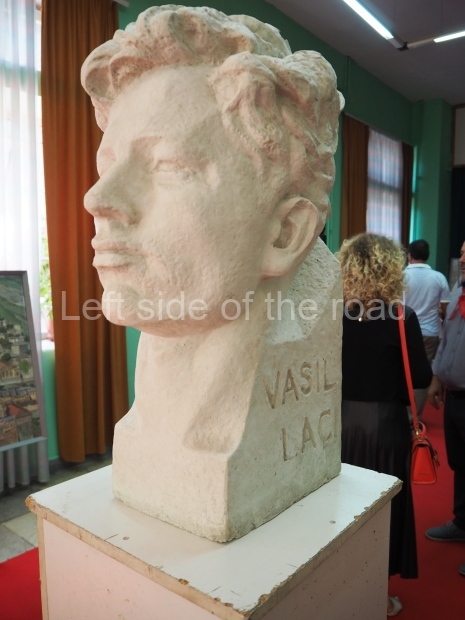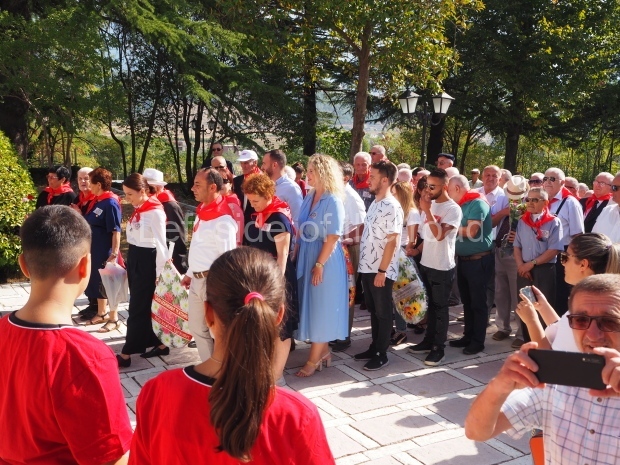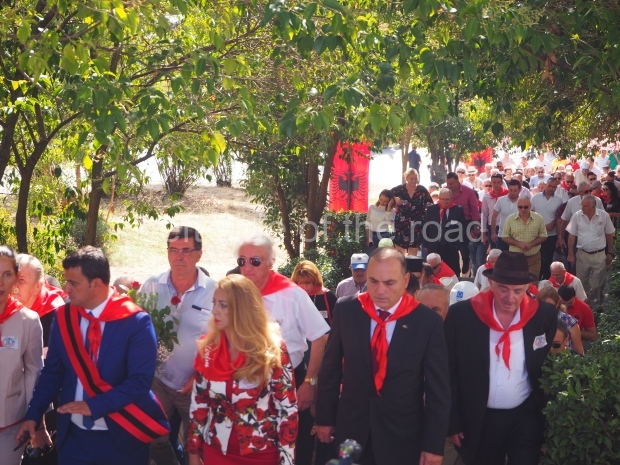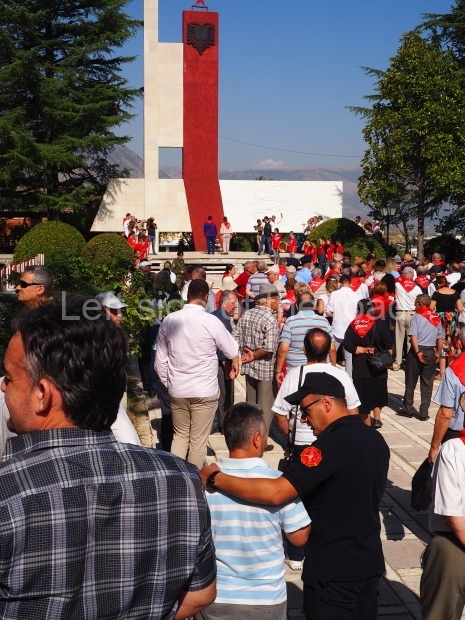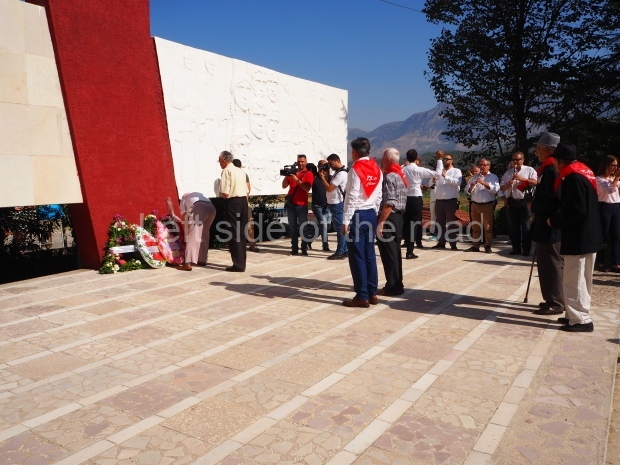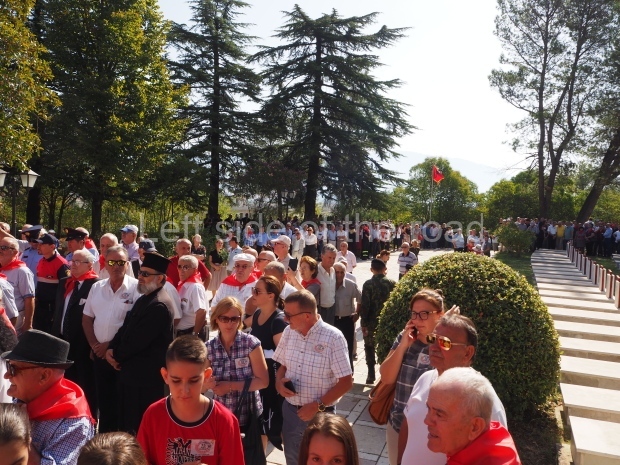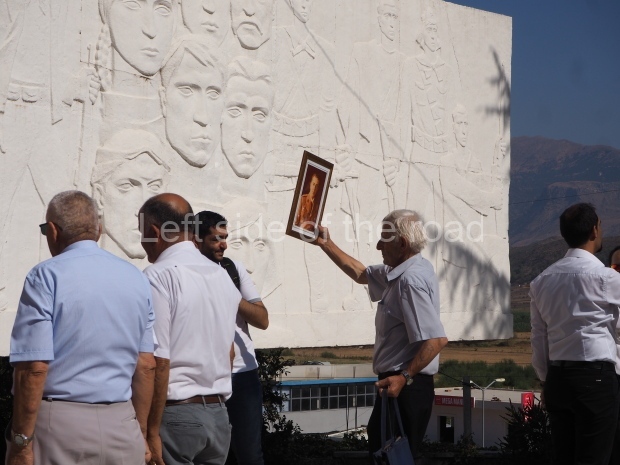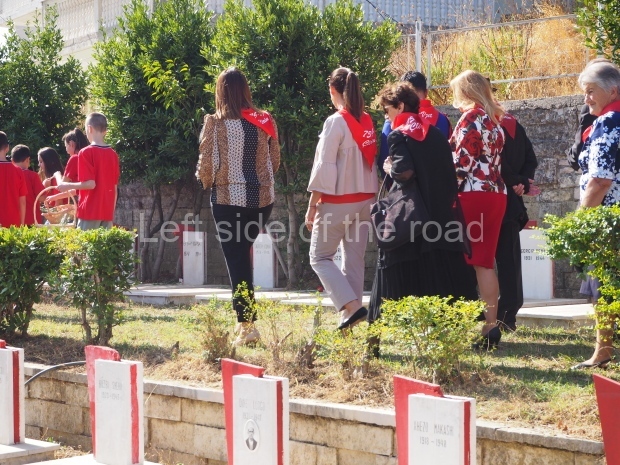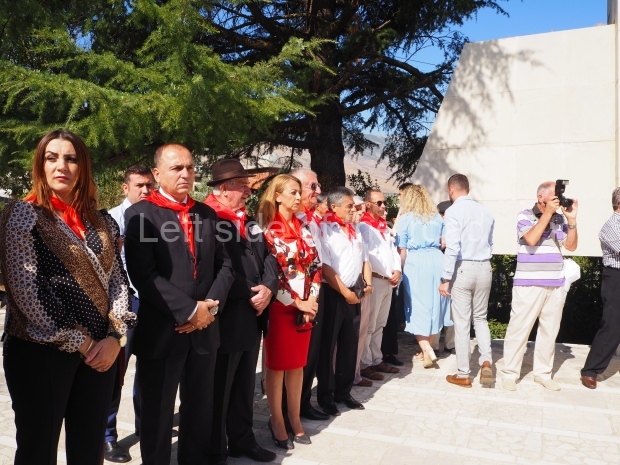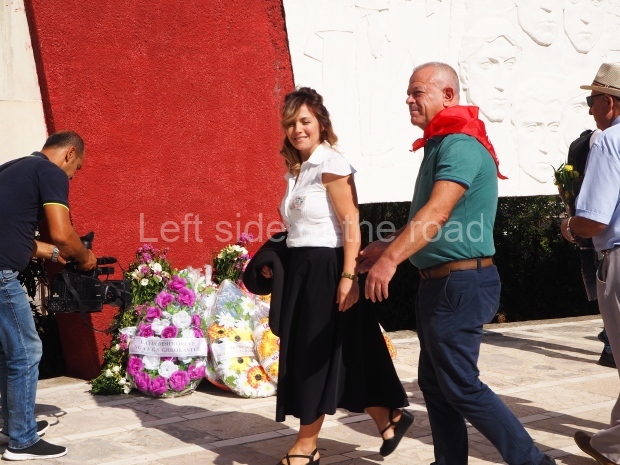
Stalin at Potsdam
More on the USSR
View of the world
Ukraine – what you’re not told
The Bomb didn’t beat Japan … Stalin did
Have decades of nuclear policy been based on a lie?
[This article first appeared way back in May 2013 when it was published on the Foreign Policy website. This version is taken from that which appeared on the Portside website on 13th November 2021. Although we disagree with the statement about the start of the Korean War we generally agree with the content and that’s why it’s being reproduced here. American spelling and grammar has been retained.]
The U.S. use of nuclear weapons against Japan during World War II has long been a subject of emotional debate. Initially, few questioned President Truman’s decision to drop two atomic bombs, on Hiroshima and Nagasaki. But, in 1965, historian Gar Alperovitz argued that, although the bombs did force an immediate end to the war, Japan’s leaders had wanted to surrender anyway and likely would have done so before the American invasion planned for Nov. 1. Their use was, therefore, unnecessary. Obviously, if the bombings weren’t necessary to win the war, then bombing Hiroshima and Nagasaki was wrong. In the years since, many others have joined the fray: some echoing Alperovitz and denouncing the bombings, others rejoining hotly that the bombings were moral, necessary, and life-saving.
Both schools of thought, however, assume that the bombing of Hiroshima and Nagasaki with new, more powerful weapons did coerce Japan into surrendering on Aug. 9. They fail to question the utility of the bombing in the first place — to ask, in essence, did it work? The orthodox view is that, yes, of course, it worked. The United States bombed Hiroshima on Aug. 6 and Nagasaki on Aug. 9, when the Japanese finally succumbed to the threat of further nuclear bombardment and surrendered. The support for this narrative runs deep. But there are three major problems with it, and, taken together, they significantly undermine the traditional interpretation of the Japanese surrender.
Timing
The first problem with the traditional interpretation is timing. And it is a serious problem. The traditional interpretation has a simple timeline: The U.S. Army Air Force bombs Hiroshima with a nuclear weapon on Aug. 6, three days later they bomb Nagasaki with another, and on the next day the Japanese signal their intention to surrender. One can hardly blame American newspapers for running headlines like: “Peace in the Pacific: Our Bomb Did It!”
When the story of Hiroshima is told in most American histories, the day of the bombing — Aug. 6 — serves as the narrative climax. All the elements of the story point forward to that moment: the decision to build a bomb, the secret research at Los Alamos, the first impressive test, and the final culmination at Hiroshima. It is told, in other words, as a story about the Bomb. But you can’t analyze Japan’s decision to surrender objectively in the context of the story of the Bomb. Casting it as “the story of the Bomb” already presumes that the Bomb’s role is central.
Viewed from the Japanese perspective, the most important day in that second week of August wasn’t Aug. 6 but Aug. 9. That was the day that the Supreme Council met — for the first time in the war — to discuss unconditional surrender. The Supreme Council was a group of six top members of the government — a sort of inner cabinet — that effectively ruled Japan in 1945. Japan’s leaders had not seriously considered surrendering prior to that day. Unconditional surrender (what the Allies were demanding) was a bitter pill to swallow. The United States and Great Britain were already convening war crimes trials in Europe. What if they decided to put the emperor — who was believed to be divine — on trial? What if they got rid of the emperor and changed the form of government entirely? Even though the situation was bad in the summer of 1945, the leaders of Japan were not willing to consider giving up their traditions, their beliefs, or their way of life. Until Aug. 9. What could have happened that caused them to so suddenly and decisively change their minds? What made them sit down to seriously discuss surrender for the first time after 14 years of war?
It could not have been Nagasaki. The bombing of Nagasaki occurred in the late morning of Aug. 9, after the Supreme Council had already begun meeting to discuss surrender, and word of the bombing only reached Japan’s leaders in the early afternoon — after the meeting of the Supreme Council had been adjourned in deadlock and the full cabinet had been called to take up the discussion. Based on timing alone, Nagasaki can’t have been what motivated them.
Hiroshima isn’t a very good candidate either. It came 74 hours — more than three days — earlier. What kind of crisis takes three days to unfold? The hallmark of a crisis is a sense of impending disaster and the overwhelming desire to take action now. How could Japan’s leaders have felt that Hiroshima touched off a crisis and yet not meet to talk about the problem for three days?
President John F. Kennedy was sitting up in bed reading the morning papers at about 8:45 a.m. on Oct. 16, 1962, when McGeorge Bundy, his national security advisor, came in to inform him that the Soviet Union was secretly putting nuclear missiles in Cuba. Within two hours and forty-five minutes a special committee had been created, its members selected, contacted, brought to the White House, and were seated around the cabinet table to discuss what should be done.
President Harry Truman was vacationing in Independence, Missouri, on June 25, 1950, when North Korea sent its troops across the 38th parallel, invading South Korea. Secretary of State Acheson called Truman that Saturday morning to give him the news. Within 24 hours, Truman had flown halfway across the United States and was seated at Blair House (the White House was undergoing renovations) with his top military and political advisors talking about what to do.
Even Gen. George Brinton McClellan — the Union commander of the Army of the Potomac in 1863 during the American Civil War, of whom President Lincoln said sadly, “He’s got the slows” — wasted only 12 hours when he was given a captured copy of Gen. Robert E. Lee’s orders for the invasion of Maryland.
These leaders responded — as leaders in any country would — to the imperative call that a crisis creates. They each took decisive steps in a short period of time. How can we square this sort of behavior with the actions of Japan’s leaders? If Hiroshima really touched off a crisis that eventually forced the Japanese to surrender after fighting for 14 years, why did it take them three days to sit down to discuss it?
One might argue that the delay is perfectly logical. Perhaps they only came to realize the importance of the bombing slowly. Perhaps they didn’t know it was a nuclear weapon and when they did realize it and understood the terrible effects such a weapon could have, they naturally concluded they had to surrender. Unfortunately, this explanation doesn’t square with the evidence.
First, Hiroshima’s governor reported to Tokyo on the very day Hiroshima was bombed that about a third of the population had been killed in the attack and that two thirds of the city had been destroyed. This information didn’t change over the next several days. So the outcome — the end result of the bombing — was clear from the beginning. Japan’s leaders knew roughly the outcome of the attack on the first day, yet they still did not act.
Second, the preliminary report prepared by the Army team that investigated the Hiroshima bombing, the one that gave details about what had happened there, was not delivered until Aug. 10. It didn’t reach Tokyo, in other words, until after the decision to surrender had already been taken. Although their verbal report was delivered (to the military) on Aug. 8, the details of the bombing were not available until two days later. The decision to surrender was therefore not based on a deep appreciation of the horror at Hiroshima.
Third, the Japanese military understood, at least in a rough way, what nuclear weapons were. Japan had a nuclear weapons program. Several of the military men mention the fact that it was a nuclear weapon that destroyed Hiroshima in their diaries. Gen. Anami Korechika, minster of war, even went to consult with the head of the Japanese nuclear weapons program on the night of Aug. 7. The idea that Japan’s leaders didn’t know about nuclear weapons doesn’t hold up.
Finally, one other fact about timing creates a striking problem. On Aug. 8, Foreign Minister Togo Shigenori went to Premier Suzuki Kantaro and asked that the Supreme Council be convened to discuss the bombing of Hiroshima, but its members declined. So the crisis didn’t grow day by day until it finally burst into full bloom on Aug. 9. Any explanation of the actions of Japan’s leaders that relies on the “shock” of the bombing of Hiroshima has to account for the fact that they considered a meeting to discuss the bombing on Aug. 8, made a judgment that it was too unimportant, and then suddenly decided to meet to discuss surrender the very next day. Either they succumbed to some sort of group schizophrenia, or some other event was the real motivation to discuss surrender.
Scale
Historically, the use of the Bomb may seem like the most important discrete event of the war. From the contemporary Japanese perspective, however, it might not have been so easy to distinguish the Bomb from other events. It is, after all, difficult to distinguish a single drop of rain in the midst of a hurricane.
In the summer of 1945, the U.S. Army Air Force carried out one of the most intense campaigns of city destruction in the history of the world. Sixty-eight cities in Japan were attacked and all of them were either partially or completely destroyed. An estimated 1.7 million people were made homeless, 300,000 were killed, and 750,000 were wounded. Sixty-six of these raids were carried out with conventional bombs, two with atomic bombs. The destruction caused by conventional attacks was huge. Night after night, all summer long, cities would go up in smoke. In the midst of this cascade of destruction, it would not be surprising if this or that individual attack failed to make much of an impression — even if it was carried out with a remarkable new type of weapon.
A B-29 bomber flying from the Mariana Islands could carry — depending on the location of the target and the altitude of attack — somewhere between 16,000 and 20,000 pounds of bombs. A typical raid consisted of 500 bombers. This means that the typical conventional raid was dropping 4 to 5 kilotons of bombs on each city. (A kiloton is a thousand tons and is the standard measure of the explosive power of a nuclear weapon. The Hiroshima bomb measured 16.5 kilotons, the Nagasaki bomb 20 kilotons.) Given that many bombs spread the destruction evenly (and therefore more effectively), while a single, more powerful bomb wastes much of its power at the center of the explosion — re-bouncing the rubble, as it were — it could be argued that some of the conventional raids approached the destruction of the two atomic bombings.
The first of the conventional raids, a night attack on Tokyo on March 9-10, 1945, remains the single most destructive attack on a city in the history of war. Something like 16 square miles of the city were burned out. An estimated 120,000 Japanese lost their lives — the single highest death toll of any bombing attack on a city.
We often imagine, because of the way the story is told, that the bombing of Hiroshima was far worse. We imagine that the number of people killed was off the charts. But if you graph the number of people killed in all 68 cities bombed in the summer of 1945, you find that Hiroshima was second in terms of civilian deaths. If you chart the number of square miles destroyed, you find that Hiroshima was fourth. If you chart the percentage of the city destroyed, Hiroshima was 17th. Hiroshima was clearly within the parameters of the conventional attacks carried out that summer.
From our perspective, Hiroshima seems singular, extraordinary. But if you put yourself in the shoes of Japan’s leaders in the three weeks leading up to the attack on Hiroshima, the picture is considerably different. If you were one of the key members of Japan’s government in late July and early August, your experience of city bombing would have been something like this: On the morning of July 17, you would have been greeted by reports that during the night four cities had been attacked: Oita, Hiratsuka, Numazu, and Kuwana. Of these, Oita and Hiratsuka were more than 50 percent destroyed. Kuwana was more than 75 percent destroyed and Numazu was hit even more severely, with something like 90 percent of the city burned to the ground.
Three days later you have woken to find that three more cities had been attacked. Fukui was more than 80 percent destroyed. A week later and three more cities have been attacked during the night. Two days later and six more cities were attacked in one night, including Ichinomiya, which was 75 percent destroyed. On Aug. 2, you would have arrived at the office to reports that four more cities have been attacked. And the reports would have included the information that Toyama (roughly the size of Chattanooga, Tennessee in 1945), had been 99.5 percent destroyed. Virtually the entire city had been leveled. Four days later and four more cities have been attacked. On Aug. 6, only one city, Hiroshima, was attacked but reports say that the damage was great and a new type bomb was used. How much would this one new attack have stood out against the background of city destruction that had been going on for weeks?
In the three weeks prior to Hiroshima, 26 cities were attacked by the U.S. Army Air Force. Of these, eight — or almost a third — were as completely or more completely destroyed than Hiroshima (in terms of the percentage of the city destroyed). The fact that Japan had 68 cities destroyed in the summer of 1945 poses a serious challenge for people who want to make the bombing of Hiroshima the cause of Japan’s surrender. The question is: If they surrendered because a city was destroyed, why didn’t they surrender when those other 66 cities were destroyed?
If Japan’s leaders were going to surrender because of Hiroshima and Nagasaki, you would expect to find that they cared about the bombing of cities in general, that the city attacks put pressure on them to surrender. But this doesn’t appear to be so. Two days after the bombing of Tokyo, retired Foreign Minister Shidehara Kijuro expressed a sentiment that was apparently widely held among Japanese high-ranking officials at the time. Shidehara opined that “the people would gradually get used to being bombed daily. In time their unity and resolve would grow stronger.” In a letter to a friend he said it was important for citizens to endure the suffering because “even if hundreds of thousands of noncombatants are killed, injured, or starved, even if millions of buildings are destroyed or burned,” additional time was needed for diplomacy. It is worth remembering that Shidehara was a moderate.
At the highest levels of government — in the Supreme Council — attitudes were apparently the same. Although the Supreme Council discussed the importance of the Soviet Union remaining neutral, they didn’t have a full-dress discussion about the impact of city bombing. In the records that have been preserved, city bombing doesn’t even get mentioned during Supreme Council discussions except on two occasions: once in passing in May 1945 and once during the wide-ranging discussion on the night of Aug. 9. Based on the evidence, it is difficult to make a case that Japan’s leaders thought that city bombing — compared to the other pressing matters involved in running a war — had much significance at all.
Gen. Anami on Aug. 13 remarked that the atomic bombings were no more menacing than the fire-bombing that Japan had endured for months. If Hiroshima and Nagasaki were no worse than the fire bombings, and if Japan’s leaders did not consider them important enough to discuss in depth, how can Hiroshima and Nagasaki have coerced them to surrender?
Strategic Significance
If the Japanese were not concerned with city bombing in general or the atomic bombing of Hiroshima in particular, what were they concerned with? The answer is simple: the Soviet Union.
The Japanese were in a relatively difficult strategic situation. They were nearing the end of a war they were losing. Conditions were bad. The Army, however, was still strong and well-supplied. Nearly 4 million men were under arms and 1.2 million of those were guarding Japan’s home islands.
Even the most hard-line leaders in Japan’s government knew that the war could not go on. The question was not whether to continue, but how to bring the war to a close under the best terms possible. The Allies (the United States, Great Britain, and others — the Soviet Union, remember, was still neutral) were demanding “unconditional surrender.” Japan’s leaders hoped that they might be able to figure out a way to avoid war crimes trials, keep their form of government, and keep some of the territories they’d conquered: Korea, Vietnam, Burma, parts of Malaysia and Indonesia, a large portion of eastern China, and numerous islands in the Pacific.
They had two plans for getting better surrender terms; they had, in other words, two strategic options. The first was diplomatic. Japan had signed a five-year neutrality pact with the Soviets in April of 1941, which would expire in 1946. A group consisting mostly of civilian leaders and led by Foreign Minister Togo Shigenori hoped that Stalin might be convinced to mediate a settlement between the United States and its allies on the one hand, and Japan on the other. Even though this plan was a long shot, it reflected sound strategic thinking. After all, it would be in the Soviet Union’s interest to make sure that the terms of the settlement were not too favorable to the United States: any increase in U.S. influence and power in Asia would mean a decrease in Russian power and influence.
The second plan was military, and most of its proponents, led by the Army Minister Anami Korechika, were military men. They hoped to use Imperial Army ground troops to inflict high casualties on U.S. forces when they invaded. If they succeeded, they felt, they might be able to get the United States to offer better terms. This strategy was also a long shot. The United States seemed deeply committed to unconditional surrender. But since there was, in fact, concern in U.S. military circles that the casualties in an invasion would be prohibitive, the Japanese high command’s strategy was not entirely off the mark.
One way to gauge whether it was the bombing of Hiroshima or the invasion and declaration of war by the Soviet Union that caused Japan’s surrender is to compare the way in which these two events affected the strategic situation. After Hiroshima was bombed on Aug. 6, both options were still alive. It would still have been possible to ask Stalin to mediate (and Takagi’s diary entries from Aug. 8 show that at least some of Japan’s leaders were still thinking about the effort to get Stalin involved). It would also still have been possible to try to fight one last decisive battle and inflict heavy casualties. The destruction of Hiroshima had done nothing to reduce the preparedness of the troops dug in on the beaches of Japan’s home islands. There was now one fewer city behind them, but they were still dug in, they still had ammunition, and their military strength had not been diminished in any important way. Bombing Hiroshima did not foreclose either of Japan’s strategic options.
The impact of the Soviet declaration of war and invasion of Manchuria and Sakhalin Island was quite different, however. Once the Soviet Union had declared war, Stalin could no longer act as a mediator — he was now a belligerent. So the diplomatic option was wiped out by the Soviet move. The effect on the military situation was equally dramatic. Most of Japan’s best troops had been shifted to the southern part of the home islands. Japan’s military had correctly guessed that the likely first target of an American invasion would be the southernmost island of Kyushu. The once proud Kwangtung army in Manchuria, for example, was a shell of its former self because its best units had been shifted away to defend Japan itself. When the Russians invaded Manchuria, they sliced through what had once been an elite army and many Russian units only stopped when they ran out of gas. The Soviet 16th Army — 100,000 strong — launched an invasion of the southern half of Sakhalin Island. Their orders were to mop up Japanese resistance there, and then — within 10 to 14 days — be prepared to invade Hokkaido, the northernmost of Japan’s home islands. The Japanese force tasked with defending Hokkaido, the 5th Area Army, was under strength at two divisions and two brigades, and was in fortified positions on the east side of the island. The Soviet plan of attack called for an invasion of Hokkaido from the west.
It didn’t take a military genius to see that, while it might be possible to fight a decisive battle against one great power invading from one direction, it would not be possible to fight off two great powers attacking from two different directions. The Soviet invasion invalidated the military’s decisive battle strategy, just as it invalidated the diplomatic strategy. At a single stroke, all of Japan’s options evaporated. The Soviet invasion was strategically decisive — it foreclosed both of Japan’s options — while the bombing of Hiroshima (which foreclosed neither) was not.
The Soviet declaration of war also changed the calculation of how much time was left for maneuver. Japanese intelligence was predicting that U.S. forces might not invade for months. Soviet forces, on the other hand, could be in Japan proper in as little as 10 days. The Soviet invasion made a decision on ending the war extremely time sensitive.
And Japan’s leaders had reached this conclusion some months earlier. In a meeting of the Supreme Council in June 1945, they said that Soviet entry into the war “would determine the fate of the Empire.” Army Deputy Chief of Staff Kawabe said, in that same meeting, “The absolute maintenance of peace in our relations with the Soviet Union is imperative for the continuation of the war.”
Japan’s leaders consistently displayed disinterest in the city bombing that was wrecking their cities. And while this may have been wrong when the bombing began in March of 1945, by the time Hiroshima was hit, they were certainly right to see city bombing as an unimportant sideshow, in terms of strategic impact. When Truman famously threatened to visit a “rain of ruin” on Japanese cities if Japan did not surrender, few people in the United States realized that there was very little left to destroy. By Aug. 7, when Truman’s threat was made, only 10 cities larger than 100,000 people remained that had not already been bombed. Once Nagasaki was attacked on Aug. 9, only nine cities were left. Four of those were on the northernmost island of Hokkaido, which was difficult to bomb because of the distance from Tinian Island where American planes were based. Kyoto, the ancient capital of Japan, had been removed from the target list by Secretary of War Henry Stimson because of its religious and symbolic importance. So despite the fearsome sound of Truman’s threat, after Nagasaki was bombed only four major cities remained which could readily have been hit with atomic weapons.
The thoroughness and extent of the U.S. Army Air Force’s campaign of city bombing can be gauged by the fact that they had run through so many of Japan’s cities that they were reduced to bombing “cities” of 30,000 people or fewer. In the modern world, 30,000 is no more than a large town.
Of course it would always have been possible to re-bomb cities that had already been bombed with firebombs. But these cities were, on average, already 50 percent destroyed. Or the United States could have bombed smaller cities with atomic weapons. There were, however, only six smaller cities (with populations between 30,000 and 100,000) which had not already been bombed. Given that Japan had already had major bombing damage done to 68 cities, and had, for the most part, shrugged it off, it is perhaps not surprising that Japan’s leaders were unimpressed with the threat of further bombing. It was not strategically compelling.
A Convenient Story
Despite the existence of these three powerful objections, the traditional interpretation still retains a strong hold on many people’s thinking, particularly in the United States. There is real resistance to looking at the facts. But perhaps this should not be surprising. It is worth reminding ourselves how emotionally convenient the traditional explanation of Hiroshima is — both for Japan and the United States. Ideas can have persistence because they are true, but unfortunately, they can also persist because they are emotionally satisfying: They fill an important psychic need. For example, at the end of the war the traditional interpretation of Hiroshima helped Japan’s leaders achieve a number of important political aims, both domestic and international.
Put yourself in the shoes of the emperor. You’ve just led your country through a disastrous war. The economy is shattered. Eighty percent of your cities have been bombed and burned. The Army has been pummeled in a string of defeats. The Navy has been decimated and confined to port. Starvation is looming. The war, in short, has been a catastrophe and, worst of all, you’ve been lying to your people about how bad the situation really is. They will be shocked by news of surrender. So which would you rather do? Admit that you failed badly? Issue a statement that says that you miscalculated spectacularly, made repeated mistakes, and did enormous damage to the nation? Or would you rather blame the loss on an amazing scientific breakthrough that no one could have predicted? At a single stroke, blaming the loss of the war on the atomic bomb swept all the mistakes and misjudgments of the war under the rug. The Bomb was the perfect excuse for having lost the war. No need to apportion blame; no court of enquiry need be held. Japan’s leaders were able to claim they had done their best. So, at the most general level the Bomb served to deflect blame from Japan’s leaders.
But attributing Japan’s defeat to the Bomb also served three other specific political purposes. First, it helped to preserve the legitimacy of the emperor. If the war was lost not because of mistakes but because of the enemy’s unexpected miracle weapon, then the institution of the emperor might continue to find support within Japan.
Second, it appealed to international sympathy. Japan had waged war aggressively, and with particular brutality toward conquered peoples. Its behavior was likely to be condemned by other nations. Being able to recast Japan as a victimized nation — one that had been unfairly bombed with a cruel and horrifying instrument of war — would help to offset some of the morally repugnant things Japan’s military had done. Drawing attention to the atomic bombings helped to paint Japan in a more sympathetic light and deflect support for harsh punishment.
Finally, saying that the Bomb won the war would please Japan’s American victors. The American occupation did not officially end in Japan until 1952, and during that time the United States had the power to change or remake Japanese society as they saw fit. During the early days of the occupation, many Japanese officials worried that the Americans intended to abolish the institution of the emperor. And they had another worry. Many of Japan’s top government officials knew that they might face war crimes trials (the war crimes trials against Germany’s leaders were already underway in Europe when Japan surrendered). Japanese historian Asada Sadao has said that in many of the postwar interviews “Japanese officials … were obviously anxious to please their American questioners.” If the Americans wanted to believe that the Bomb won the war, why disappoint them?
Attributing the end of the war to the atomic bomb served Japan’s interests in multiple ways. But it also served U.S. interests. If the Bomb won the war, then the perception of U.S. military power would be enhanced, U.S. diplomatic influence in Asia and around the world would increase, and U.S. security would be strengthened. The $2 billion spent to build it would not have been wasted. If, on the other hand, the Soviet entry into the war was what caused Japan to surrender, then the Soviets could claim that they were able to do in four days what the United States was unable to do in four years, and the perception of Soviet military power and Soviet diplomatic influence would be enhanced. And once the Cold War was underway, asserting that the Soviet entry had been the decisive factor would have been tantamount to giving aid and comfort to the enemy.
It is troubling to consider, given the questions raised here, that the evidence of Hiroshima and Nagasaki is at the heart of everything we think about nuclear weapons. This event is the bedrock of the case for the importance of nuclear weapons. It is crucial to their unique status, the notion that the normal rules do not apply to nuclear weapons. It is an important measure of nuclear threats: Truman’s threat to visit a “rain of ruin” on Japan was the first explicit nuclear threat. It is key to the aura of enormous power that surrounds the weapons and makes them so important in international relations.
But what are we to make of all those conclusions if the traditional story of Hiroshima is called into doubt? Hiroshima is the center, the point from which all other claims and assertions radiate out. Yet the story we have been telling ourselves seems pretty far removed from the facts. What are we to think about nuclear weapons if this enormous first accomplishment — the miracle of Japan’s sudden surrender — turns out to be a myth?
Ward Wilson is a senior fellow at the British American Security Information Council and the author of “Five Myths About Nuclear Weapons,” from which this article was adapted.
More on the USSR
View of the world
Ukraine – what you’re not told












